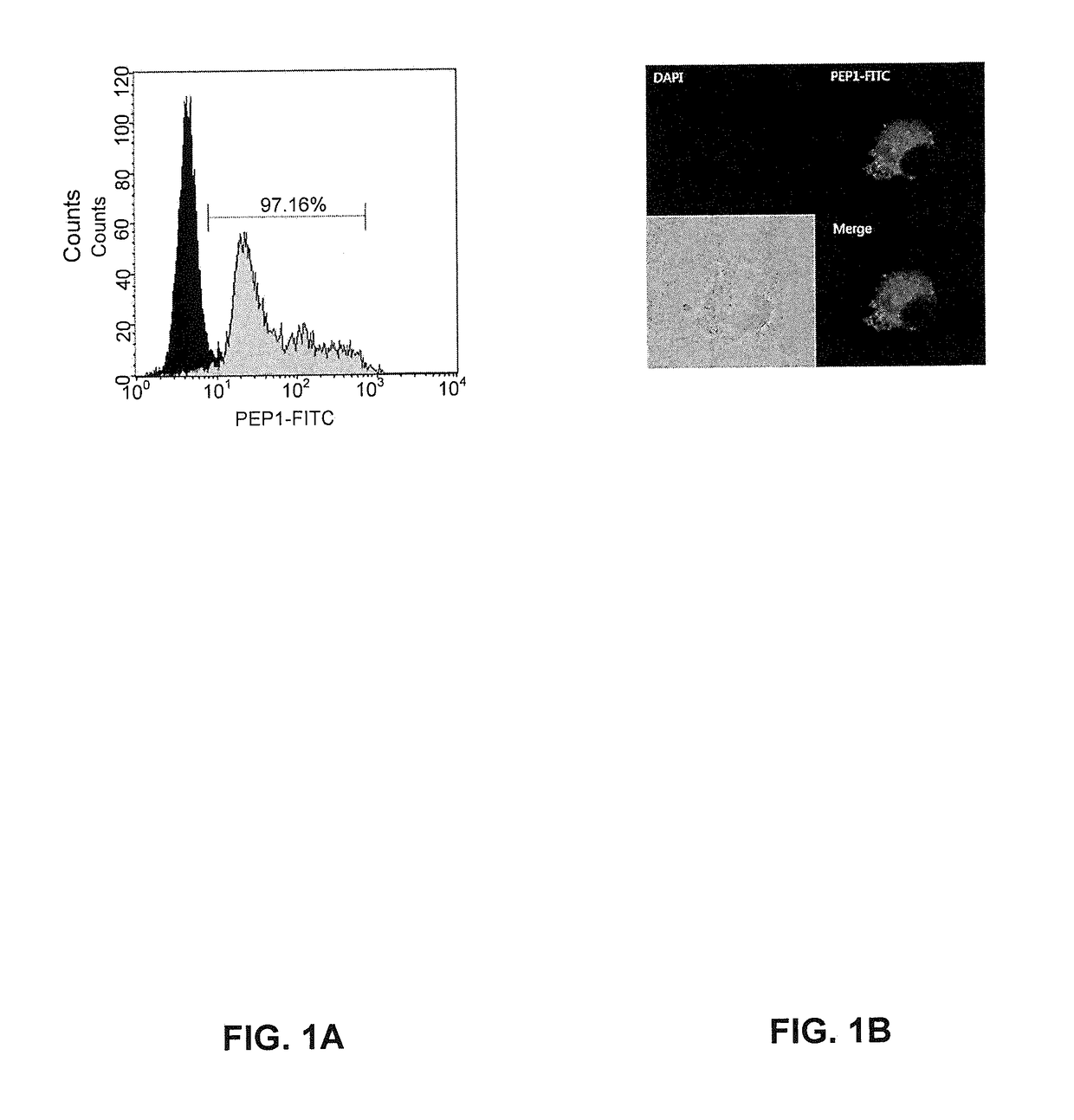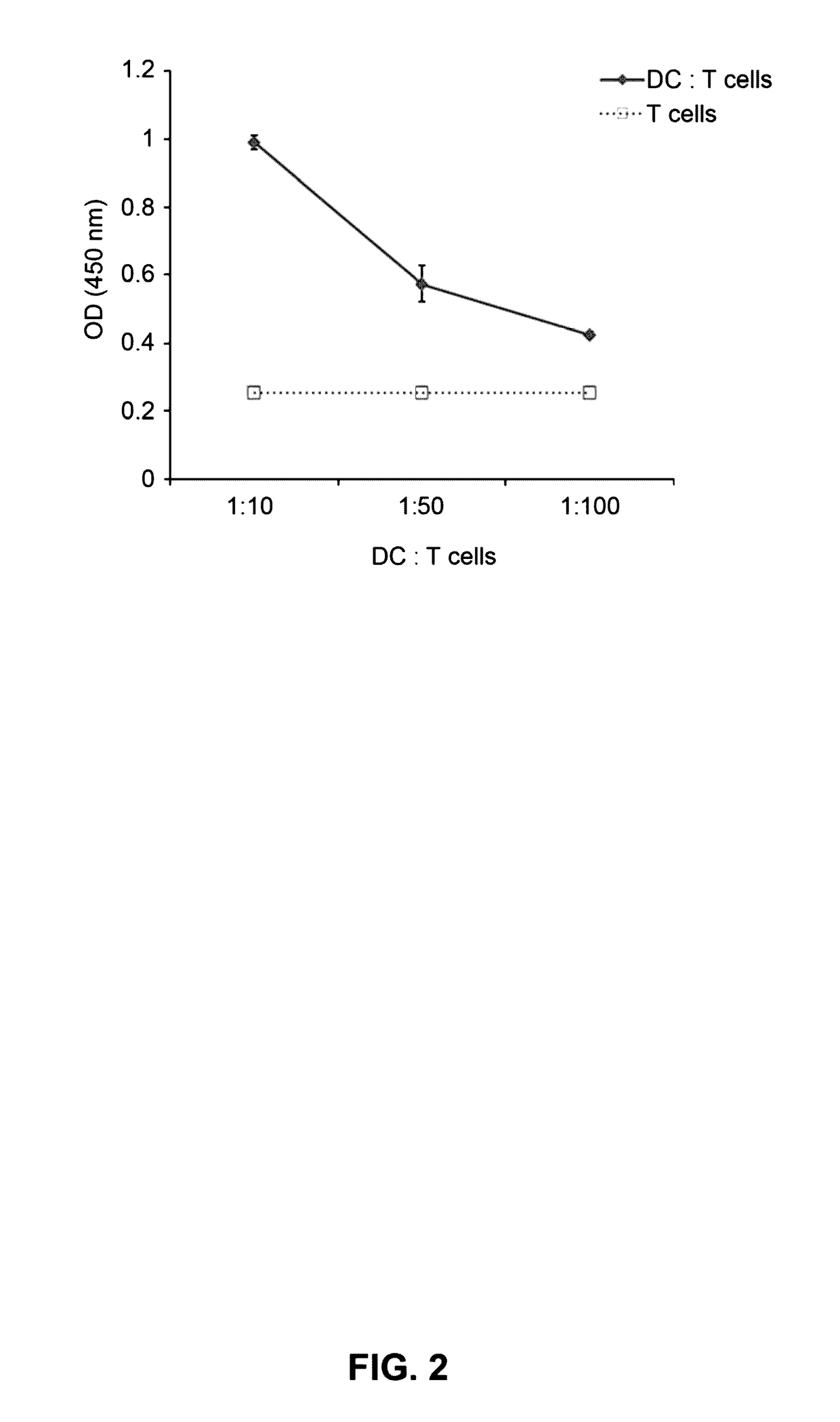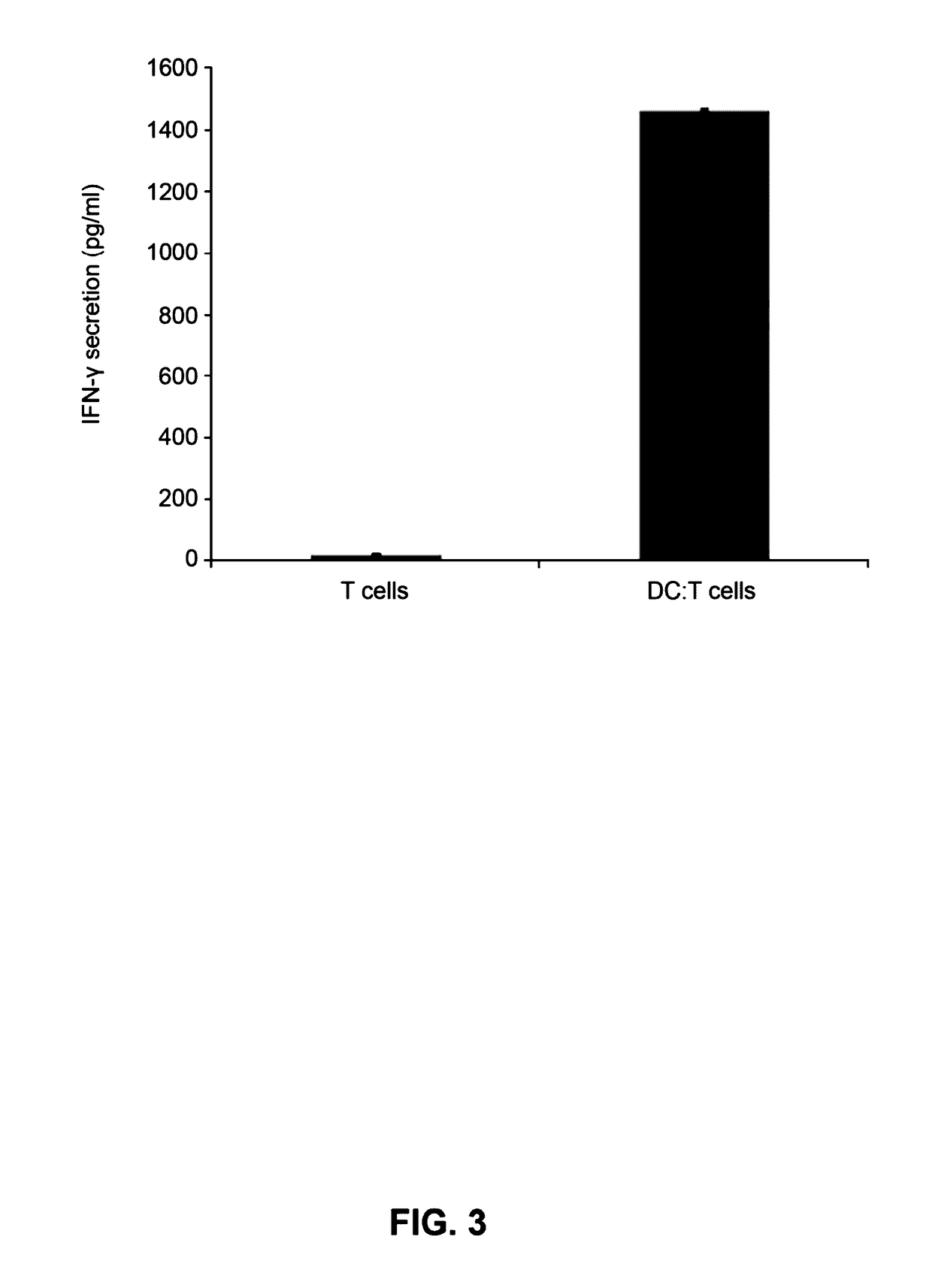Dendritic Cell Therapeutic Agent and Immunotherapeutic Agent Comprising Peptide Derived from Telomerase, and Therapeutic Methods Using the Same
- Summary
- Abstract
- Description
- Claims
- Application Information
AI Technical Summary
Benefits of technology
Problems solved by technology
Method used
Image
Examples
example 1
Synthesis of Peptides
1. Synthesis of Peptides
[0067]A peptide of SEQ ID NO: 1 (hereinafter, referred to as “PEP 1”) was prepared according to a conventionally known method of solid phase peptide synthesis. Specifically, peptides were synthesized by coupling each amino acid to another from the C-terminus through Fmoc solid phase peptide synthesis (SPPS) using ASP48S (Peptron, Inc., Daejeon, Korea). Peptides in which the first amino acid at the C-terminus is attached to a resin were used as follows:
[0068]NH2-Lys(Boc)-2-chloro-trityl resin
[0069]NH2-Ala-2-chloro-trityl resin
[0070]NH2-Arg(Pbf)-2-chloro-trityl resin
[0071]In all amino acid ingredients used in the synthesis of the peptides, the N-terminus was protected with Fmoc, and the residues were protected with Trt, Boc, t-butylester (t-Bu), and 2,2,4,6,7-pentamethyl dihydro-benzofuran-5-sulfonyl (Pbf) that can be removed in an acid. Examples of the amino acids are as follows:[0072]Fmoc-Ala-OH, Fmoc-Arg(Pbf)-OH, Fmoc-Glu(OtBu)-OH, Fmoc-...
example 2
Preparation of Dendritic Cells Activated by Antigens (Peptides)
[0085]A method for preparing dendritic cells comprises a process of preparing mononuclear cells by proliferating mononuclear cells from obtained blood, and a process of differentiating the mononuclear cells into dendritic cells. According to the method for differentiating mononuclear cells into dendritic cells, mononuclear cells may be cultured in a medium containing interleukin-4 (IL-4) and may be differentiated into immature dendritic cells. The obtained immature dendritic cells may be cultured in a medium containing tumor necrosis factors-α (TNF-α) and may be differentiated into mature dendritic cells.
1. Separation of Human Peripheral Blood Mononuclear Cells (hPBMCs)
[0086]5 to 100 cc of peripheral blood was extracted from a healthy applicant using an evacuated blood collection tube containing an anticoagulant such as heparin. The extracted blood was mixed with phosphate buffered saline (PBS) in a predetermined ratio t...
example 3
Analysis of Function of Dendritic Cells
Example 3-1: Analyses of Endocytosis and Cellular Uptake of imDCs
[0091]The imDCs have an excellent ability of recognizing and capturing antigens, compared with the mature dendritic cells. The imDCs differentiated according to an example of the present invention were subjected to flow cytometry and confocal microscopy to analyze whether an antigen PEP1 is transported into the cells.
1. Analysis of Endocytosis of imDCs
[0092]1×106 cells / ml of imDCs were treated with 50 to 100 μg / ml of fluorescein isothiocyanate (PEP1-FITC) and cultured at 37° C. for 30 minutes, 1 hour, or 2 hours. Following the culture, the cells were washed with PBS twice, and endocytosis of imDCs was analyzed using a FACSCalibur (Becton Dickinson). As a control, dendritic cells were cultured at 4° C. for 1 hour. FIG. 1A shows an FACS result denoting that PEP1-treated immature dendritic cells (green right side graph) shifted right, compared with the control (black left side graph)...
PUM
| Property | Measurement | Unit |
|---|---|---|
| Time | aaaaa | aaaaa |
| Volume | aaaaa | aaaaa |
| Volume | aaaaa | aaaaa |
Abstract
Description
Claims
Application Information
 Login to View More
Login to View More - R&D
- Intellectual Property
- Life Sciences
- Materials
- Tech Scout
- Unparalleled Data Quality
- Higher Quality Content
- 60% Fewer Hallucinations
Browse by: Latest US Patents, China's latest patents, Technical Efficacy Thesaurus, Application Domain, Technology Topic, Popular Technical Reports.
© 2025 PatSnap. All rights reserved.Legal|Privacy policy|Modern Slavery Act Transparency Statement|Sitemap|About US| Contact US: help@patsnap.com



